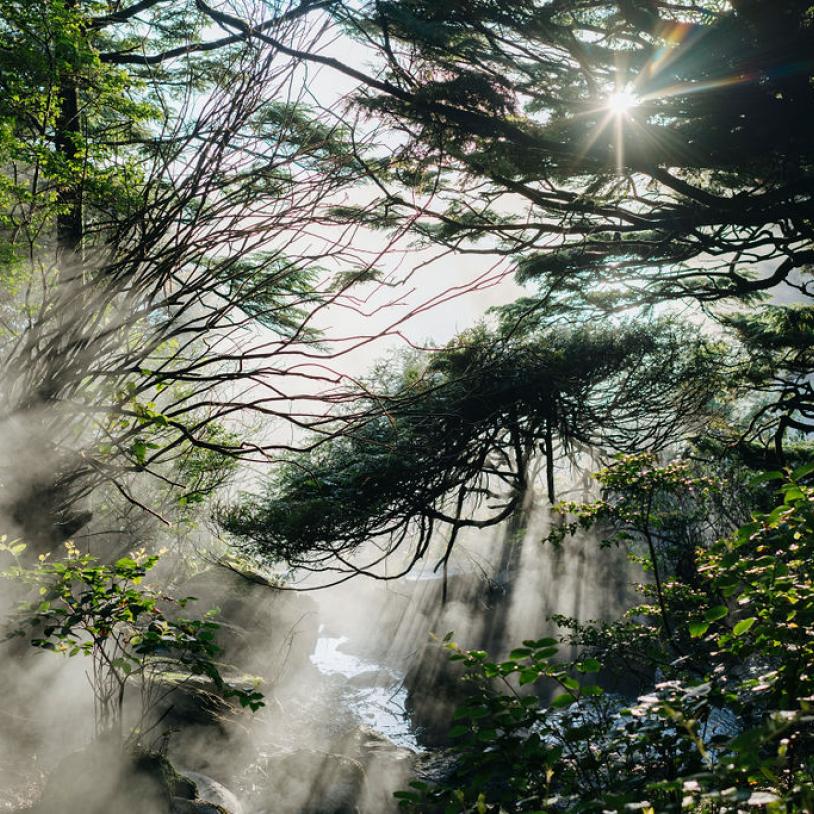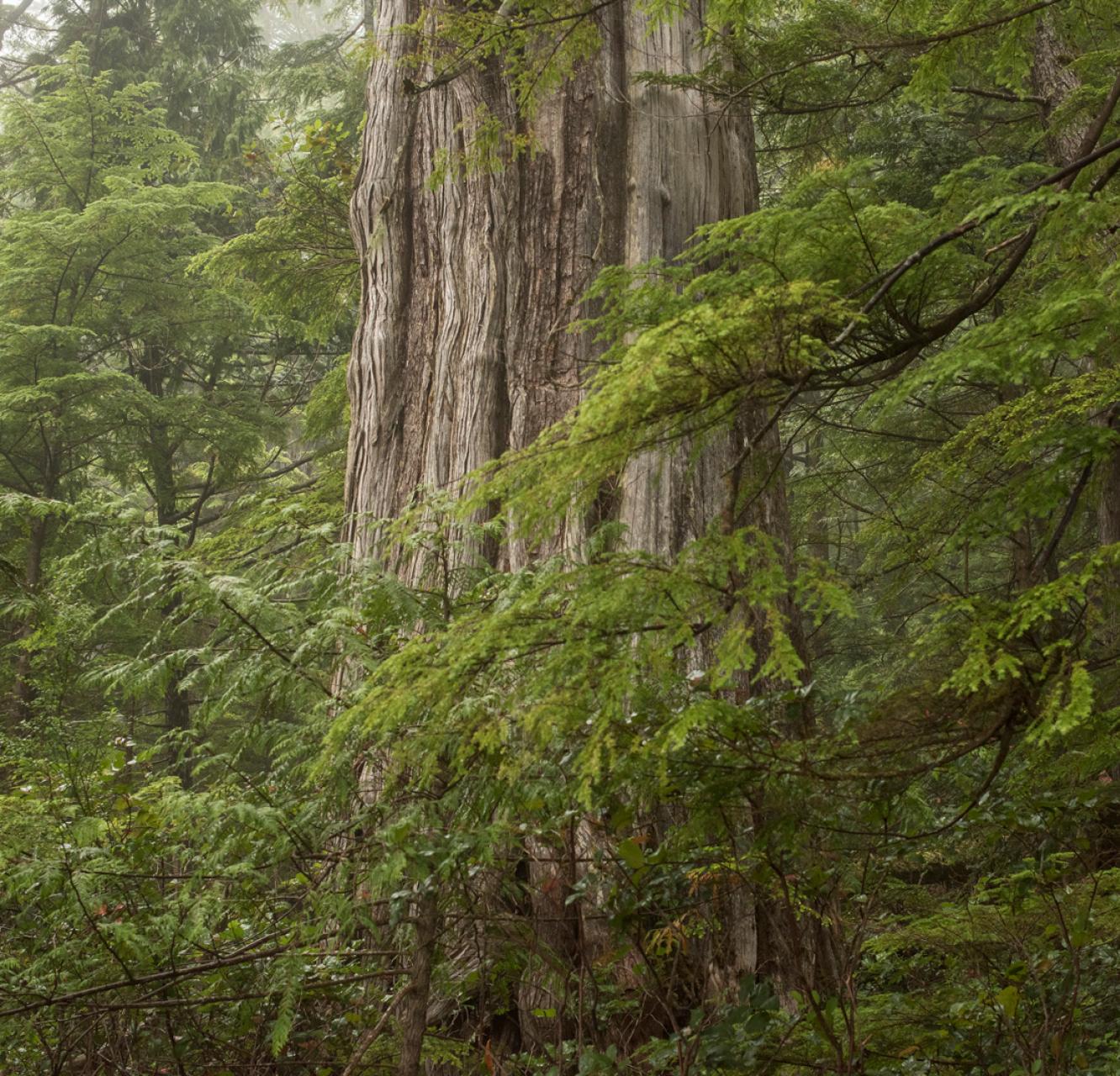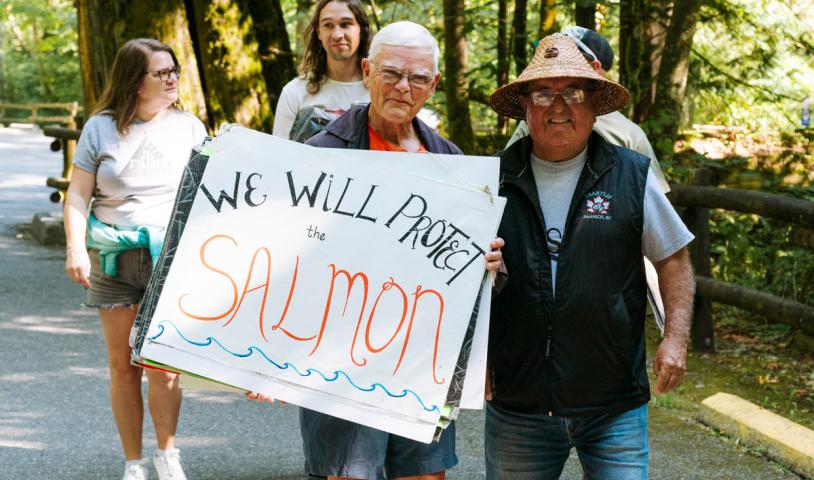Wouldn’t it be nice if future generations had ancient forests?
Monday, April 12, 2010

Photo: Hiker at the Red Creek Fir
Nowadays, I spend so much time in front of my computer that I often forget what an amazing place we live in. British Columbia is home to some of the most spectacular forests in the world. Our coastal giants include the biggest trees in the Canada, including Port Renfrew’s Red Creek Fir (over 70 metres tall) and Pacific Rim National Park’s Cheewhat Lake Cedar (18 metres around), which is Canada’s most massive tree.
People come from all over the world to witness our big trees and vast wilderness areas, making wilderness tourism a growing staple in B.C.’s economy. Many people I talk to who have come to marvel at our ancient forests speak of how standing next to an ancient giant can change your life. These massive trees can be over 1,800 years old, which far predates any building in Canada. It kind of makes our lives seem smaller in the grand scheme of things.
Ancient forests play an essential role in the health of B.C.’s ecosystems. They are home to many threatened or endangered species, like the marbled murrelet, the spotted owl, and a plethora of neat snails, salamanders, and bugs. Often these species, like the marbled murrelet, are so well adapted for a specific ecosystem that without big trees to live in, they loose all suitable homes.
Ancient forests also play a critical role in storing carbon. Big trees have a lifetime of carbon dioxide stored in their limbs. And the longer that trees live, the more carbon they can store.
B.C.’s ancient forests are truly spectacular, but we are cutting through them at an alarming rate. On Vancouver Island alone, 73 percent of our ancient forests have already been logged. Much of what remains has no protection from logging. Some of our most recognizable trees, like the Red Creek Fir, could be logged any day.
The B.C. government has also deregulated the forest industry, for example, deleting over 3,500 hectares of corporately owned private timberlands from tree farm licences around the province. Tree farm licences regulate how much companies are allowed to cut each year, and ensure that companies participate in replanting—even on their private lands. With deregulation, many companies are now no longer obligated to do so, and then when they are done clear-cutting they can sell their land off for real estate, like with the controversial Western Forest Products land sale on southern Vancouver Island.
Our current forestry policies are bad for the trees, bad for the species, and certainly bad for jobs. In 2003, a change in provincial policy meant that trees cut down in B.C. no longer had to be processed in B.C. Between 2000 and 2007, 38 wood processing facilities in B.C. have been shut down by the timber companies. These processing facilities have until recently provided good-paying mill jobs, and have sustained communities in urban and rural B.C. for generations.
We can have forestry policies that make sense for our ancient forests, and our forestry workers. There is a growing understanding between environmentalists and forestry workers that leaving ancient forests alone, banning log exports to foreign mills, and focusing on value-added wood processing here in B.C. can be a sustainable forestry solution that works for all British Columbians.
B.C.’s ancient forests are a natural gem. Let’s protect them now, so future generations’ lives can also be touched and shaped by these forests—as our lives have.
Tria Donaldson is a youth climate activist that has been involved with the goBeyond project, the Sierra Youth Coalition, and the Canadian Youth Climate Coalition. She is currently the Vancouver Island outreach coordinator for the Wilderness Committee.





